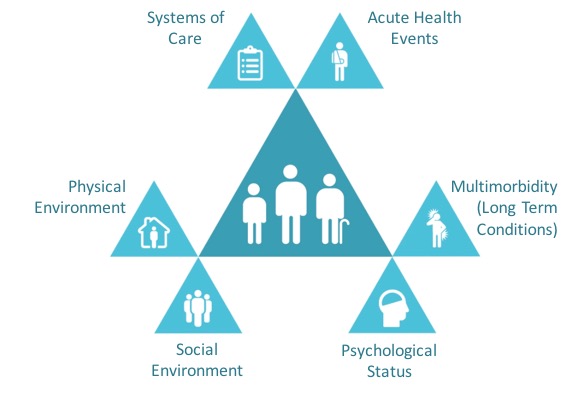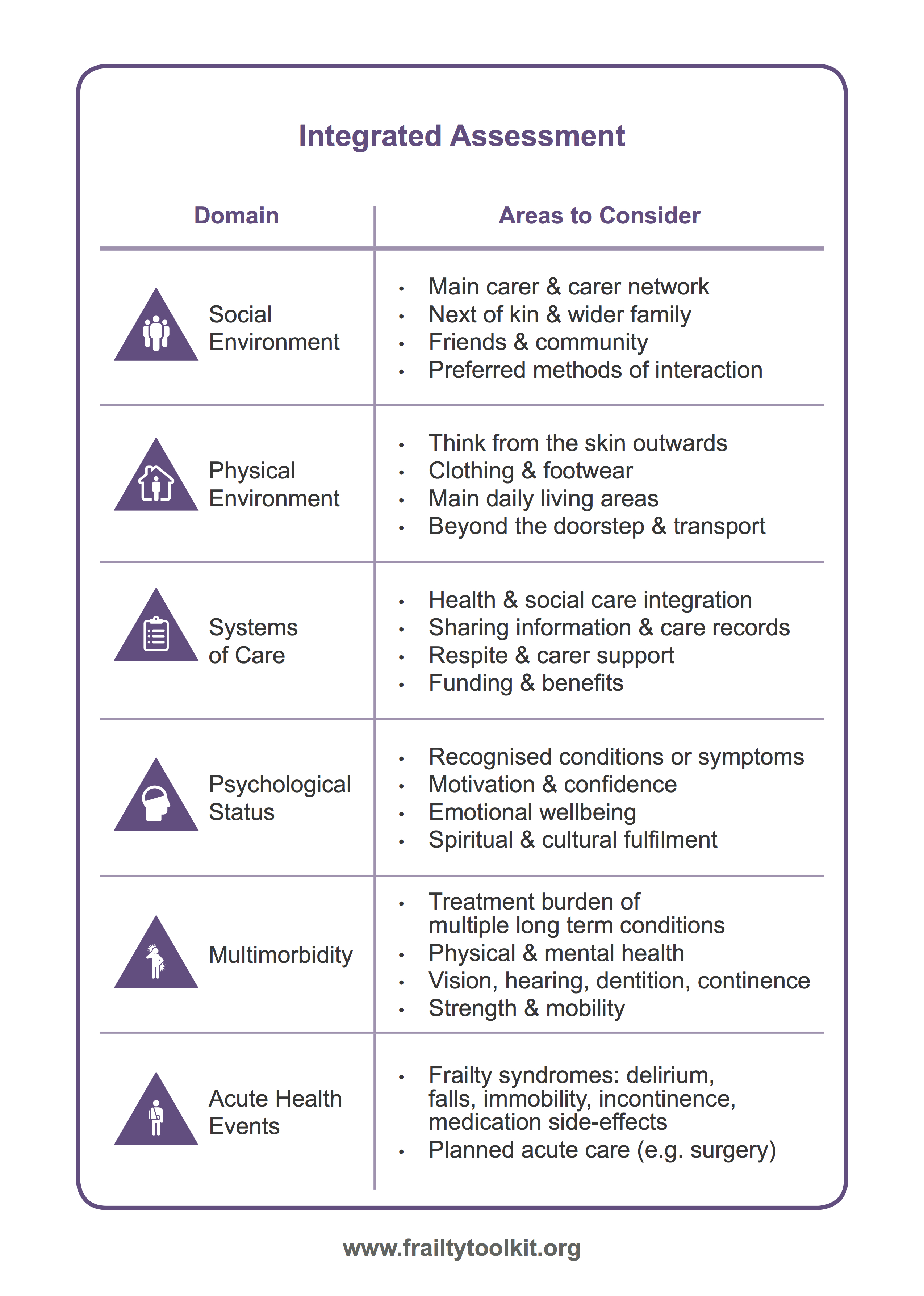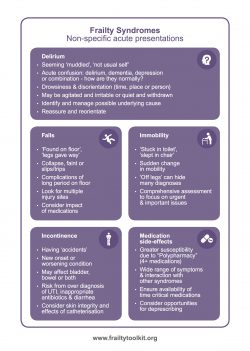 Frailty is a well-recognised expression of population ageing.
Frailty is a well-recognised expression of population ageing.
It is:
- A state of reduced resilience and increased vulnerability;
- A state which minor events can trigger disproportionate adverse outcomes in health, wellbeing or functional ability;
- Related to, but distinct from, ageing, comorbidity and disability.
People living with severe frailty comprise 3% of the population aged 65 and older in England. For moderate frailty it is 12% of those aged 65 and older and for mild frailty 35%.
Older people living with frailty are at increased risk of adverse outcomes including disability, hospitalisation, nursing home admission and mortality. However, there is evidence that frailty may be a modifiable condition and appropriate intervention can influence frailty trajectories. The UK and international consensus guidance recommends identification of frailty as part of routine clinical encounters, or wider population screening, to facilitate the planning and delivery of services for older people.
The Frailty Fulcrum
The concept of frailty as a long-term condition brings with it the opportunity to adopt a much more proactive, person-centred, community-based approach to care. This new approach will be enabled through a wider awareness of frailty and a greater shared understanding of the condition.
The ‘Frailty Fulcrum’ is an animated model that has been developed with these opportunities in mind. It aims to provide a ‘common language’ for frailty that can be shared between individuals, carers and professionals. The model offers an interpretation of frailty that is meaningful, relevant and sustainable for people living with the condition, throughout their journeys of care.
https://vimeo.com/140588708
“As a GP who sits on a CCG Board and does work involving the Elderly and Care Homes I found this a succinct way of highlighting the many, interdependent problems our increasingly ageing population faces.”
The frailty fulcrum highlights the multi-dimensional nature of frailty. It considers the many different aspects of our lives that contribute to our overall wellbeing through a series of domains:
- Social environment, including our families, our friends, our communities, any of the people or places that are important to us.
- Physical environment, which is our homes in particular but also the many places that we visit as we live our lives.
- Psychological status, which includes both specific conditions, such as anxiety, or more general feelings like a loss of confidence or a lack of motivation.
- Multimorbidity, which is the impact of multiple long-term conditions, including impairments and mental health conditions as well as physical health conditions.
- Acute health problems, including the ‘Frailty Syndromes’, of falls, immobility, delirium, incontinence and side effects of medication.
- Systems of care, which have a direct impact upon wellbeing, not just through the care that they provide, but also through the way in which they deliver that care.
Factors within each of these domains can either promote resilience or create vulnerability for the individual. The frailty fulcrum shows how resilience and vulnerability across the domains come together to create the holistic condition of frailty. It also shows how the dynamic balance and interactions between the domains influence individual quality of life.
The frailty fulcrum explains how keeping a good balance between all the different things going on in our lives becomes more difficult over time and that, as our level of frailty increases, the likelihood of relatively small things causing bigger problems increases. These changes can occur more quickly for some people than for others and the model explains both the association and difference between frailty and ageing.
The frailty fulcrum demonstrates that whilst challenges in some areas of our lives might be difficult to overcome, a person’s quality of life can still be improved by promoting resilience in other areas, whatever the individual’s age or degree of frailty.
It highlights the importance of empowering individuals and supporting their choices and control over the care they receive and the ways in which they live their lives. The Frailty Fulcrum thus helps us to identify and understand the multi-dimensional opportunities that exist to optimise quality of life for people living with frailty.
Find out more about the Frailty Toolkit and associated resources here.
Download our Integrated Assessment and Frailty Syndromes overview
Already have a login?


